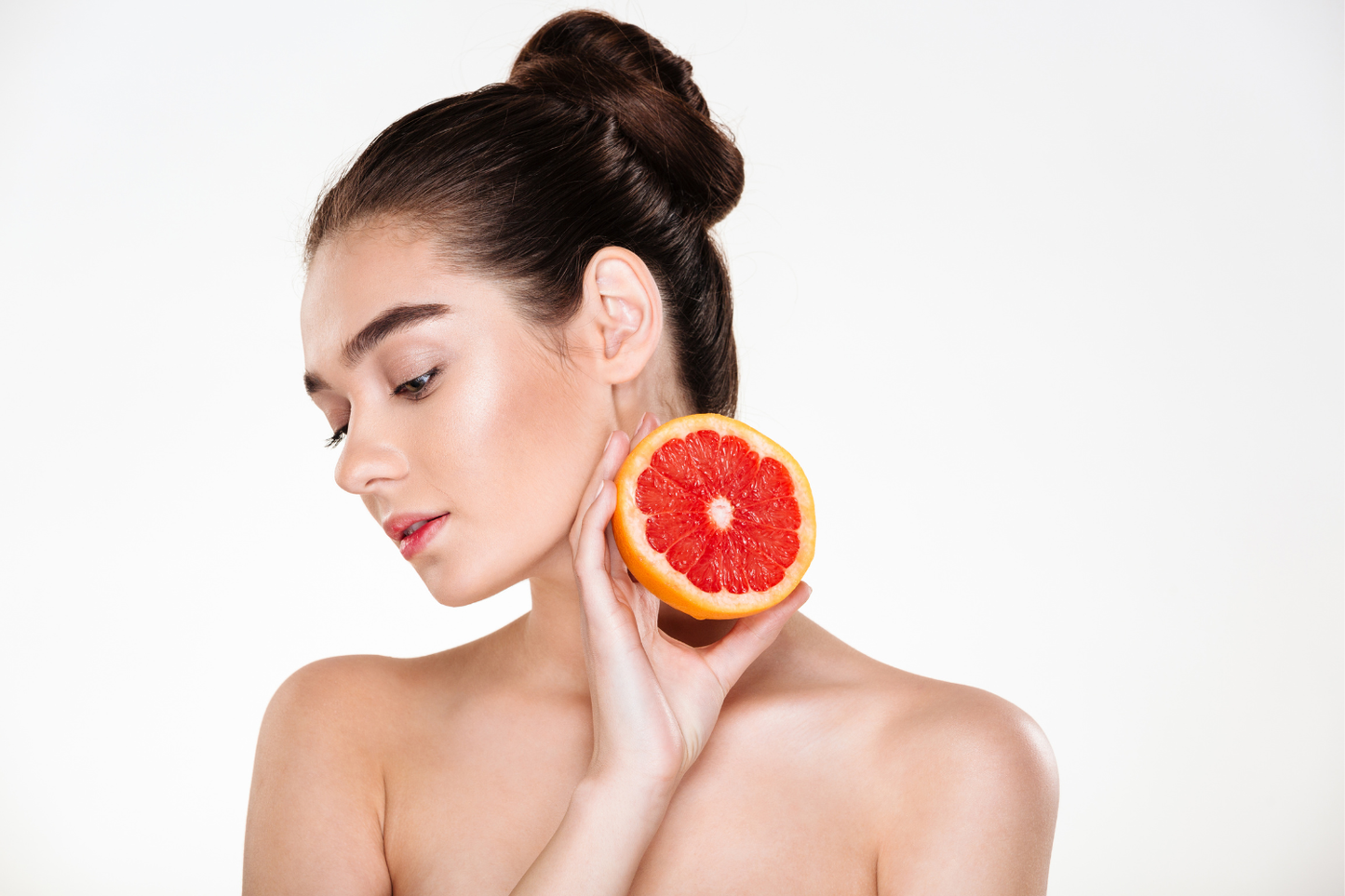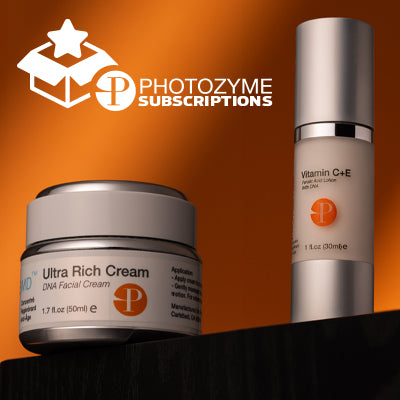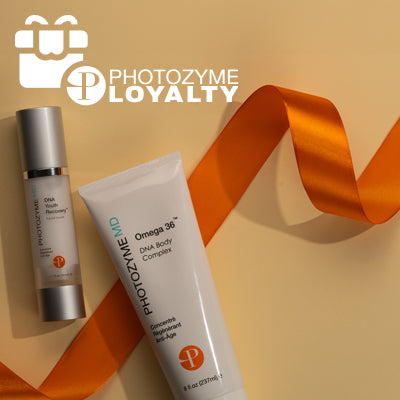
Defend against wrinkles and pollution with clinically proven antioxidants for skin. Try Photozyme’s advanced, science-backed anti-aging solutions.
Key Takeaways:
- Surface & Cellular Protection: Antioxidants, supported by DNA repair technologies, offer surface-level protection and molecular intervention, which are crucial for protecting skin against aging and pollution.
- Multi-Layered Environmental Defense: Combining antioxidants with SPF in skincare routines provides a multi-layered defense against environmental stressors, while stable formulations ensure maximum efficacy.
- Visible Results Through Consistent Use: Over twelve weeks, consistent use and proper application of antioxidants significantly neutralize free radicals, promote skin health, and achieve visible anti-aging results.
Antioxidants are vital in shielding your skin from invisible but cumulative damage caused by UV rays, pollution, and oxidative stress. Whether tackling early signs of aging or trying to offset urban exposure, the right antioxidant support helps reinforce barrier function and improve skin longevity. If you're wondering how antioxidants for skin actually work, and which ones matter, this is where you start.
At Photozyme, we’re built on clinical performance. Our every formula is driven by patented DNA repair technology, backed by peer-reviewed science, and designed for visible, measurable results.
In this blog, we’ll break down how antioxidants defend against oxidative stress, their role in preventing premature aging, and why their pairing with SPF and DNA repair enzymes creates a clinically sound foundation for long-term skin health.
Antioxidants Explained In Skin-Friendly Terms
Think of your skin as a fortress continuously exposed to outside threats: sunlight, pollution, and daily stress. Over time, these external factors generate unstable molecules called free radicals. Free radicals aggressively interact with your skin’s cells, damaging structures like collagen and elastin. This process, known as oxidative stress, accelerates the formation of fine lines, wrinkles, dark spots, and dullness.
The Protective Power Of Antioxidants
Antioxidants are your skin’s intelligent defenders. These molecules locate and neutralize free radicals before they can inflict harm. In clinical terms, antioxidants donate electrons to destabilized molecules, disarming them and preventing a chain reaction of cellular damage. Dermatologists and researchers rely on numerous peer-reviewed studies highlighting how topical antioxidants, such as vitamins C and E and ferulic acid, reduce oxidative stress and foster healthier cellular function.
Why Antioxidants Deserve A Place In Your Routine
The benefits of using antioxidants in your daily routine are multifaceted. They shield your skin against environmental damage and support the regeneration of compromised skin barriers. They also reduce inflammation and optimize your skin’s natural repair mechanisms. When incorporated consistently, antioxidants for skin act as both guardians and catalysts, working quietly behind the scenes to help maintain youthful texture, clarity, and resilience.
Selecting Stable Antioxidant Formulations
When integrating antioxidants for skin into your regimen, formulation stability is paramount for real, lasting benefits. Antioxidants are naturally prone to degradation when exposed to air, light, and temperature fluctuations, diminishing their efficacy before they ever reach your skin.
How Delivery Systems Preserve Antioxidant Potency
Begin by looking for formulations leveraging state-of-the-art encapsulation or advanced delivery systems that shield ingredients from environmental exposure. Technologies such as liposomes, microencapsulation, and anhydrous (water-free) bases have been shown to preserve the potency of sensitive actives like vitamin C, vitamin E, and ferulic acid. By preventing premature oxidation, these innovations help ensure that antioxidants remain bioavailable, maximizing their ability to neutralize free radicals and defend against pollution and UV-induced oxidative stress.
Packaging Formats That Protect Active Ingredients
Another essential consideration is packaging. Opt for products housed in opaque, airtight containers rather than clear jars or dropper bottles. Clinical studies demonstrate that antioxidants in pump dispensers or single-use ampoules maintain functionality longer than in traditional packaging.
How Ingredient Synergy Enhances Stability And Results
Finally, review concentrations and supporting ingredients. Synergistic combinations, such as vitamin C paired with vitamin E and ferulic acid, enhance stability and offer increased free radical scavenging capacity. Peer-reviewed research underlines how balanced blends amplify visible results, from improving skin tone uniformity to softening the appearance of fine lines.
Creating A Morning Shield With SPF And Serum
Integrated protection is fundamental when defending your skin against environmental aggressors and the molecular cascade that leads to wrinkles. Each morning, you face many invisible threats: UV radiation, oxidative stress from urban pollution, and the byproducts of your skin’s metabolic activity. Robust, clinical evidence demonstrates that pairing a broad-spectrum SPF with a potent antioxidant serum offers synergistic defense at multiple biological levels.
- How Antioxidant Serums Target Molecular Damage: Start your regimen with a serum containing stabilized antioxidants such as vitamin C, E, and ferulic acid. These compounds help neutralize free radicals, reduce UV-induced inflammation, and support collagen synthesis at a cellular level before damage can accumulate.
- Why SPF Alone Is Not Enough: Sunscreen protects against UV rays but does not eliminate free radicals generated by sun exposure. Antioxidants fill this critical gap by neutralizing reactive oxygen species that form even with SPF, providing layered protection that’s biologically more complete.
- The Role Of Layering In Efficacy: Apply antioxidant serum first to allow ingredients to penetrate deeply and target molecular stress. Follow with SPF 30 or higher to block UV rays physically. Proper sequence ensures both layers perform optimally without diminishing each other’s effectiveness.
- Scientific Validation Of Serum & SPF Pairing: Peer-reviewed studies show this combination reduces erythema, improves skin tone uniformity, and enhances resilience. When used consistently, it minimizes long-term DNA damage and the cumulative effects of environmental aging, including wrinkles, roughness, and pigmentation.
- How This Duo Builds Daily Resilience: Serum and sunscreen act as a biochemical and physical barrier. The antioxidants neutralize internal and external oxidative stress, while SPF prevents initial insult, creating a synergistic defense system proven to slow visible aging.
- Why Consistency Is Non-Negotiable: Daily use is essential for long-term results. Sporadic application limits protection and repair potential. Incorporating both steps into your morning routine is the gold standard in professional dermatology for maintaining firm, clear, youthful skin.
How To Read An Ingredient List Like A Pro
When investigating skincare, a thorough understanding of the ingredient list reveals much about a product’s true efficacy. The order in which ingredients appear is foundational: by law, they are listed in descending order of concentration up to 1%, after which everything else follows in any sequence. Recognizing this hierarchy allows you to gauge whether potent actives, such as antioxidants for skin, are present in meaningful amounts, or simply tacked onto the end for marketing appeal.
Identifying Clinically Backed Actives
Focus on the actives. Vitamin C, niacinamide, ferulic acid, and coenzyme Q10 are clinically validated antioxidants that neutralize free radicals, protect against environmental stressors, and can visibly reduce fine lines. If these ingredients are near the top or middle of an ingredient list, you’ll likely experience significant results.
Evaluating Supporting Technologies And Synergistic Ingredients
Next, scrutinize supporting ingredients. Delivery systems, such as liposomes or encapsulation technology, enhance the penetration and stability of antioxidants, making them far more impactful than what’s seen with traditional formulations. Ingredients like hyaluronic acid and ceramides can also synergize with antioxidants, supporting the skin’s barrier and hydration.
Knowing What To Avoid For Skin Compatibility
Pay attention to what’s missing as well. The absence of parabens, heavy fragrances, or comedogenic oils minimizes the potential for irritation and breakout, which is vital for those using powerful anti-aging actives. As an added precaution, evaluate a formula’s integrity by looking for hypoallergenic or dermatologist-tested statements on the packaging.
Making Ingredient Analysis A Practical Habit
Mastering the ingredient list requires looking beneath flashy buzzwords and marketing promises. Rely on ingredients you recognize, prioritize high concentrations of clinically proven antioxidants, and assess whether the overall formula supports both efficacy and skin health. This attention to detail is essential in selecting products that deliver on their scientific claims and advance your skincare regimen.
Common Mistakes That Undermine Efficacy
Integrating antioxidants for skin protection offers measurable benefits—but suboptimal habits can inhibit their potential.
- Inconsistent Application Reduces Protective Benefits: Antioxidant-rich products require consistent daily use to provide complete protection against free radicals, UV damage, and pollution. Infrequent application weakens cumulative defense mechanisms, exposing the skin to ongoing oxidative stress despite high-quality formulations.
- Incorrect Layering Limits Ingredient Absorption: Applying antioxidants after creams or oils can form a barrier that inhibits absorption of active molecules. To ensure maximum bioavailability, apply antioxidant serums on clean, dry skin before moisturizers or sunscreen are added.
- Improper Storage Compromises Potency: Light, air, and temperature fluctuations degrade antioxidants like ascorbic acid. Storing products in humid environments or using clear containers can accelerate oxidation, decreasing their stability and rendering them far less effective over time.
- Skipping SPF Undermines Antioxidant Performance: Antioxidants neutralize free radicals but don’t block UV radiation. Without broad-spectrum SPF, UV exposure triggers DNA damage and collagen breakdown, negating the long-term benefits of antioxidant application.
- Overlooking Packaging Design Affects Stability: Formulas housed in jars or droppers are often vulnerable to air and light exposure. Prioritize antioxidant products in airtight, opaque containers to maintain clinical potency and extend shelf life throughout regular use.
- Using Oxidized Products Can Cause Irritation: Expired or discolored antioxidant products may lose efficacy and trigger irritation or pro-oxidative effects. Regularly check product color, smell, and texture to avoid applying degraded formulations to the skin.
Final Thoughts
At Photozyme, every formulation is anchored in rigorously validated science. We harness the precise power of antioxidants for skin defense and DNA repair enzyme technology. This approach empowers you to address oxidative stress at its source, targeting the molecular triggers of fine lines, uneven tone, and loss of firmness.
Adding antioxidants to your clinical skincare routine is non-negotiable if you consider preserving dermal health. Our Vitamin CE + Ferulic Acid Lotion acts on multiple levels, neutralizing free radicals and reinforcing your barrier against daily aggressors. At the same time, our DNA Youth Recovery Facial Serum goes further, facilitating DNA repair and long-term skin regeneration. Together, these solutions provide tangible results supported by clinical data and decades of dermatological research.
With paraben-free, non-comedogenic formulas trusted by professionals, Photozyme gives you access to anti-aging breakthroughs that fit seamlessly into your daily regimen.
Read also:
- Peptides For Skin: What They Are And How They Work
- Is Tretinoin A Retinoid? What You Need To Know Before Using It
- Can Kojic Acid Permanently Lighten Skin? The Truth You Need To Know
Frequently Asked Questions About Antioxidants For Skin
What are antioxidants for skin?
Antioxidants for skin are molecules that neutralize free radicals, unstable atoms generated by factors like UV radiation, pollution, and metabolic processes. These free radicals can damage cellular structures, contributing to visible aging (like wrinkles) and impairing the skin’s innate repair mechanisms. Integrating antioxidants into skincare disrupts this cycle, protecting skin at a cellular level and promoting healthier, more resilient tissue.
Can antioxidants shield skin from pollution?
Absolutely. Airborne pollutants are a significant trigger for oxidative stress in the skin, accelerating inflammation, pigmentation, and collagen breakdown. When applied topically, antioxidants provide a defensive barrier by intercepting free radicals before they cause cellular injury. This shield minimizes the impact of pollutants, helping skin maintain clarity and firmness amidst environmental stressors.
Which antioxidants are best for skin?
While many antioxidants offer skin benefits, clinical research highlights a few as especially potent: vitamin C (ascorbic acid), vitamin E (tocopherol), ferulic acid, coenzyme Q10, niacinamide, and green tea polyphenols. These synergistically disrupt free radicals, enhance skin barrier function, and support natural repair. Photozyme’s antioxidant blends, especially when paired with DNA repair enzymes, maximize efficacy to deliver visible, lasting results.
Are antioxidant serums effective?
Yes, when formulated for optimal stability and penetration, antioxidant serums are among the most effective interventions for battling environmental and intrinsic skin aging. Our serums are engineered for maximum dermal bioavailability, ensuring the active ingredients reach their cellular targets where they intercept free radical damage, brighten skin tone, and visibly diminish signs of aging.
What foods are high in skin-friendly antioxidants?
Dietary antioxidants complement topical care. Rich sources include berries (like blueberries, raspberries), dark leafy greens (spinach, kale), oranges, tomatoes, nuts, seeds, and green tea. These nutrients support systemic defense against oxidative skin stress, providing an internal foundation for radiance and resilience.
Do antioxidants prevent premature aging?
Yes. By reducing oxidative stress, the primary driver of collagen breakdown, elastin loss, and pigmentation, antioxidants effectively slow the biological processes that manifest as premature skin aging. Regular use, especially in clinical-grade serum form, interrupts the aging cycle at a molecular level to preserve skin’s youthful attributes.
Should I use antioxidants daily for my skin?
Daily use is strongly recommended for sustained protection and optimal benefits. Consistent application delivers continuous defense against ongoing environmental insults, ensuring your skin’s regenerative and protective mechanisms remain robust daily. Photozyme’s DNA Youth Recovery Facial Serum and antioxidant-rich lotions are designed for seamless, daily integration into any skincare protocol.





